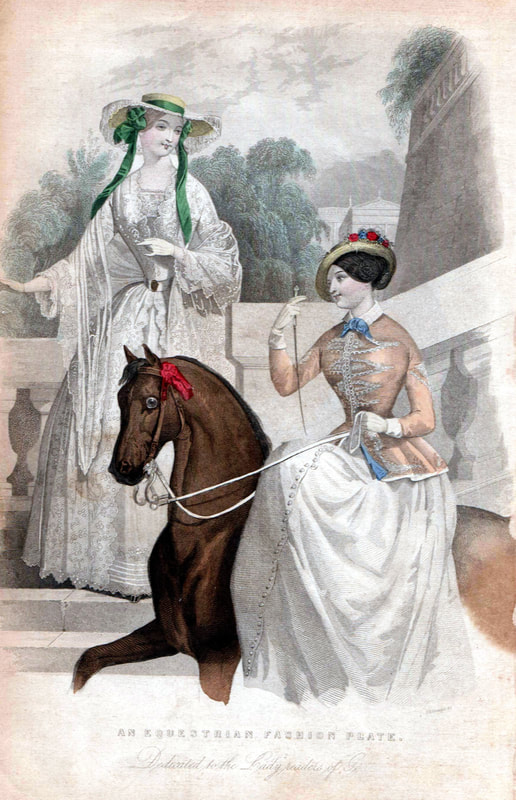|
Godey’s Lady’s Book
January, 1849 Description of the Fashion Plate. Having “distanced” all our contemporaries, it only remained for us to anticipate Nature, and we therefore present a picture of green fields and waving woodlands, even though January’s cold may be at this moment chilling the graceful forms of our lady readers. Seriously, having given all the stylish cloaks and mantillas that pleased us, and thinking by this time they had been profited by in the selection of winter wardrobes, we have exerted our taste and ingenuity in getting out a pretty spring costume, that our demoiselles may have some clue to what will be worn the ensuing season. Apart from the information conveyed, we flatter ourselves that as a picture, it adds much to the beauty of the number, and will bear preservation long after the styles it faithfully portrays shall have become antique. Figure 1st – Riding dress for the country. – Leghorn hat, with a rolled brim, the dress a full skirt of pale drab-colored cashmere, fastened up the front by a close row of very small silk buttons of the same color. A “Jack Sheppard” waist (see Lady’s Book for November) of nankeen, with a rich white linen braid embroidery on the front and sleeves. The short skirt, or basque, is trimmed in the same way as the waist, and lined with pale blue Florence silk. Plain linen collar and cuffs, and a blue ribbon neck tie. Gloves as near as possible the shade of the waist. 2d figure – Morning dress for a watering-place. – Under robe of white cambric muslin, with a border of narrow tucks and fine embroidery. Over dress of jaconet muslin, the sleeves wide and loose at the wrist. This robe has a rich border of needlework, with a scalloped edge. A belt of pale green fastened by a small gold buckle, confines it at the waist. Hat of uncut Leghorn, trimmed with pale green ribbon, and a fall of deep lace, that, thrown back over the brim, serves as a veil. The hat is designed expressly and only for the country, where it will be found very useful.
0 Comments
Leave a Reply. |
AuthorUsually Dannielle, sometimes Mandy Archives
January 2021
Categories |

 RSS Feed
RSS Feed